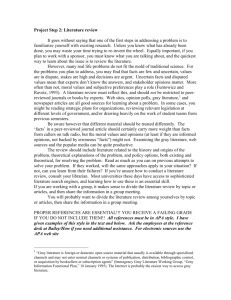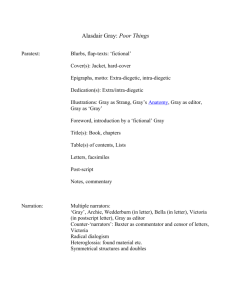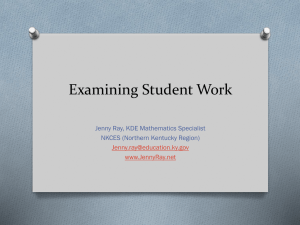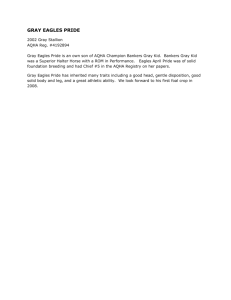B Y S A M Y...
advertisement
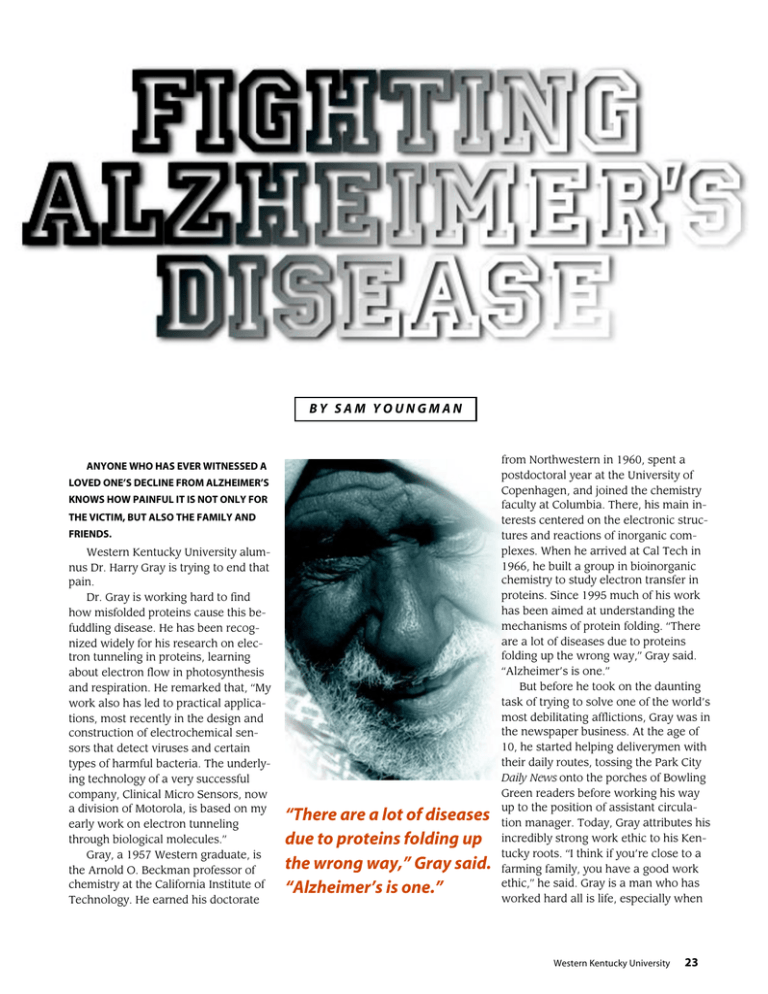
BY SAM YOUNGMAN ANYONE WHO HAS EVER WITNESSED A LOVED ONE’S DECLINE FROM ALZHEIMER’S KNOWS HOW PAINFUL IT IS NOT ONLY FOR THE VICTIM, BUT ALSO THE FAMILY AND FRIENDS. Western Kentucky University alumnus Dr. Harry Gray is trying to end that pain. Dr. Gray is working hard to find how misfolded proteins cause this befuddling disease. He has been recognized widely for his research on electron tunneling in proteins, learning about electron flow in photosynthesis and respiration. He remarked that, “My work also has led to practical applications, most recently in the design and construction of electrochemical sensors that detect viruses and certain types of harmful bacteria. The underlying technology of a very successful company, Clinical Micro Sensors, now a division of Motorola, is based on my early work on electron tunneling through biological molecules.” Gray, a 1957 Western graduate, is the Arnold O. Beckman professor of chemistry at the California Institute of Technology. He earned his doctorate “There are a lot of diseases due to proteins folding up the wrong way,” Gray said. “Alzheimer’s is one.” from Northwestern in 1960, spent a postdoctoral year at the University of Copenhagen, and joined the chemistry faculty at Columbia. There, his main interests centered on the electronic structures and reactions of inorganic complexes. When he arrived at Cal Tech in 1966, he built a group in bioinorganic chemistry to study electron transfer in proteins. Since 1995 much of his work has been aimed at understanding the mechanisms of protein folding. “There are a lot of diseases due to proteins folding up the wrong way,” Gray said. “Alzheimer’s is one.” But before he took on the daunting task of trying to solve one of the world’s most debilitating afflictions, Gray was in the newspaper business. At the age of 10, he started helping deliverymen with their daily routes, tossing the Park City Daily News onto the porches of Bowling Green readers before working his way up to the position of assistant circulation manager. Today, Gray attributes his incredibly strong work ethic to his Kentucky roots. “I think if you’re close to a farming family, you have a good work ethic,” he said. Gray is a man who has worked hard all is life, especially when Western Kentucky University 23 The illustration is a three-dimensional depiction of the protein alzheimer amyloid B. The twisted orange ribbon is a string of amino acids. It is taken from a computer model by Dr. Manuel C. Peitsch at the Glaxo Institute for Molecular Biology in Geneva, Switzerland. He derived the images from the coordinate entries of the Brookhaven Protein Data Bank (Brookhaven National Laboratory, Upton, New York). 24 The Western Scholar | Spring 2002 tist of the Year in 1988 and he was the George Eastman Professor at the University of Oxford. In 1995, 30 years after leaving the Hill, Gray was inducted into Western’s Hall of Distinguished Alumni. Gray said he took more than a degree and two Ohio Valley Conference tennis championships from Western. He also found his wife, Shirley, a fellow 1957 graduate. These days, Gray, originally from Woodburn, Ky., returns to the bluegrass about once a year to visit family. But even in Calif., he can hear the call like bugles on Derby day. “I’m still a Kentucky boy,” he said. “You never get that out of yourself.” Looking back on the Hill, looking forward to more remarkable success, Gray will tell you Western played a large part in making him the intellectual giant he is today. “What I really remember was the faculty, and how supportive they were of the students,” he said. “It was a nice environment for learning.” Around Kentucky, it’s only natural a Dr. Harry B. Gray (’57) man’s thoughts would turn to the hardwood and the tremendous athletes that dribble up and down it in search of victory. What does Gray have to say about that? “Go Big Red.” PHOTO BY BOB PAZ he came to Western where he worked 40 – 60 hours a week in addition to attending school. “I worked very hard when I was at Western,” he said. “The reason I work hard is because I love what I do,” he said. “It’s not work to me. I’m happiest when I’m working on chemistry.” Gray’s passion for chemistry research stemmed from his love of playing around with chemicals and his fascination with the colors they create. This voracious appetite for chemistry began at an early age, and was nurtured by Western faculty and students. “I had wonderful chemistry teachers when I was at Western,” he said. “The faculty was very supportive.” The Western motto is “The Spirit Makes the Master.” Gray has become the master, so what does he think of the spirit? “That’s me,” he said. “That’s what I learned at Western. “The spirit does make the master. I’ve always believed that. It applies all through life.” His résumé reads like a science book. His awards are countless. President Ronald Reagan gave him the National Medal of Science. Great Britain named him a Foreign Member of their Royal Society. He has 17 published books and more than 600 papers. He has received numerous other awards such as the Pauling Medal in 1986, the LinderstromLang prize in 1991, the Gibbs Medal in 1994, the Chandler Medal in 1999, six national awards from the American Chemical Society and 12 honorary doctorates. To list all his awards would be a magazine in itself. But that’s not all. His world-wide renown as a chemist is demonstrated in a number of memberships: he is a member of the National Academy of Sciences, the American Philosophical Society, the Royal Danish Academy of Sciences and Letters, the Royal Swedish Academy of Sciences, and he is an honorary member of the Italian Chemical Society. He was California Scien- Western Kentucky University 25

